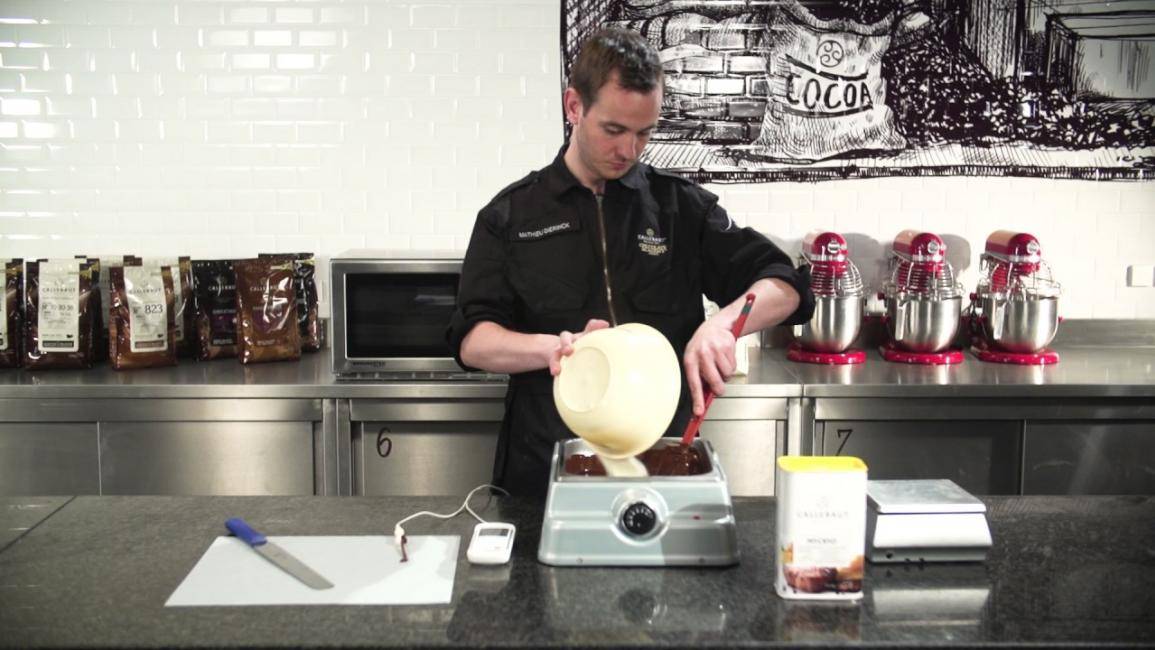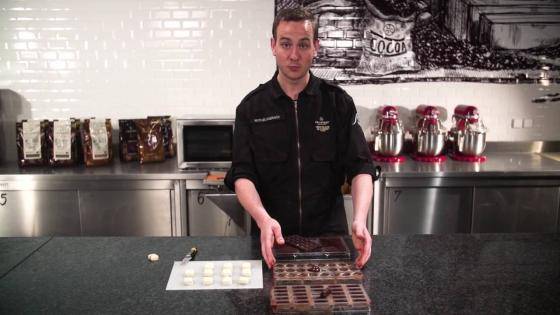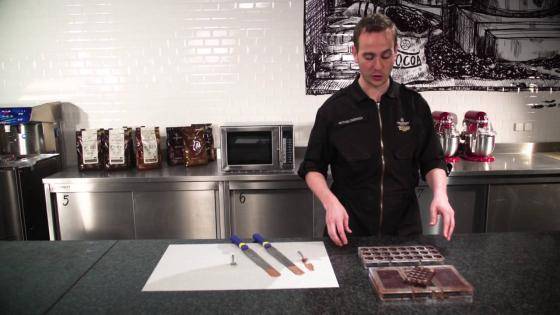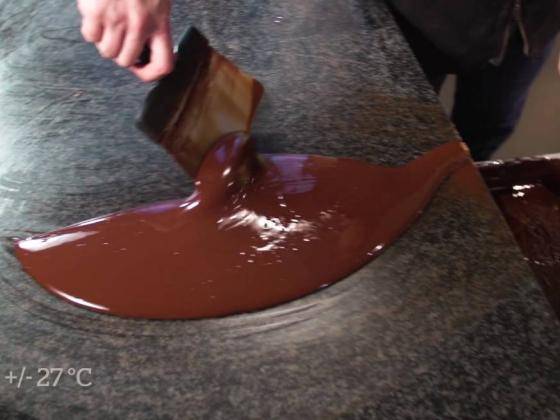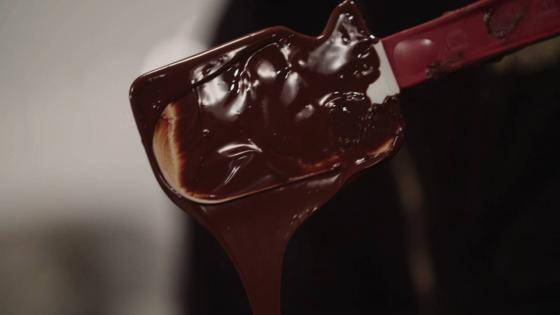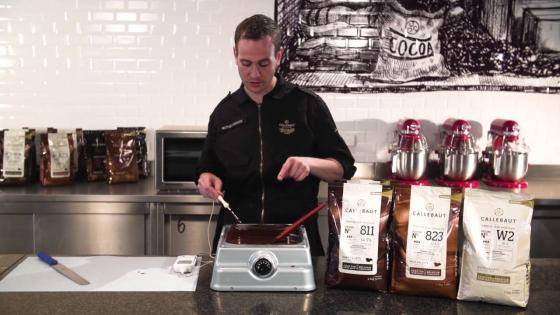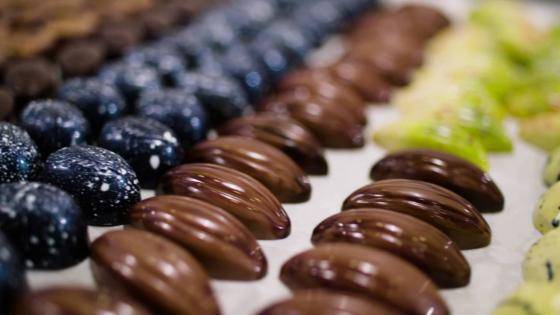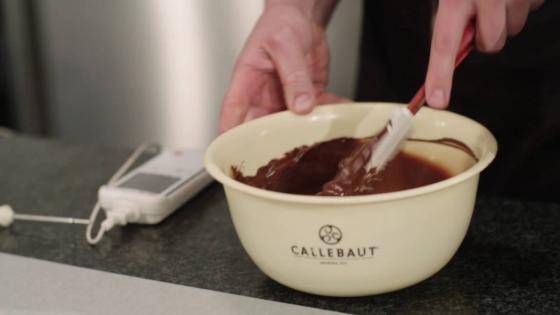Tempering - Tempering chocolate with cocoa butter
How to temper chocolate with cocoa butter
Mycryo is crystallised cocoa butter in powder form. This tutorial teaches you how you can easily temper or pre-crystallise your chocolate with it.
GOOD TO KNOW
Why is fluidity so important?
The fluidity of your chocolate determines the thickness of the shell and the snap of your chocolate products: the more fluid your chocolate, the thinner and crunchier your shell will be.
Using chocolate with the right fluidity also saves time: you can cast large moulds in one go with less fluid chocolate. Chocolate with a higher fluidity is better for moulds with a lot of detail, but you’ll need to fill your mould with chocolate 2 to 3 times.
Why is it so important to pre-crystallise chocolate properly?
It helps chocolate harden, and gives it a beautiful satin gloss and a delicious snap. It makes chocolate contract during cooling, which makes it easier to unmould. Badly crystallised or uncrystallised chocolate will turn grey and won’t have an appetising gloss.
What is tempering or pre-crystallising?
The purpose of tempering chocolate is to pre-crystallise the cocoa butter in it, which is important to make your chocolate ready for processing. During tempering, the cocoa butter in the chocolate takes on a stable crystalline form. This guarantees a perfect finished product with a satin gloss and a hard snap. It also makes the chocolate contract during cooling, which makes it easier to unmould. If chocolate is simply melted (between 40 and 45 °C) and then left to cool down to a suitable working temperature, the finished product will not be glossy. If you make the small effort of bringing your chocolate to the right working temperature properly, you are guaranteed to get the desired end result. And that’s what we mean by tempering: bringing chocolate up to the right working temperature while making sure that the crystalline structure of the cocoa butter in it is stable. As you’ll discover below, the three key principles for proper tempering are time, temperature and movement.
Step 1
Melt your chocolate at 40-45°C (in a microwave or bain-marie).
Step 2
Allow the chocolate to cool at room temperature to 34°C (for dark chocolate) or 33°C (for milk, white or coloured chocolate).
Step 3
Add 1% Mycryo to your melted chocolate, i.e. 10 g for every 1 kg of chocolate.
Step 4
Mix well.
Step 5
When the chocolate is perfectly pre-crystallised, keep its temperature at 34°C (for dark chocolate) or at 33°C (for milk, white or coloured chocolate).
Step 6
In order to use your chocolate over a longer period of time, keep it at 31°C (for dark chocolate) or at 29°C (for milk, white or coloured chocolate).
What’s the technical side of the story?
When you temper your chocolate on a marble worktop or when you ‘seed’ it with pre-crystallised chocolate, you’re causing a chain reaction that makes the cocoa butter in your chocolate take on a stable crystalline structure called the beta crystal form. Cocoa butter can crystallise in any one of 6 different forms, but it is the beta crystal form that produces the desired qualities in chocolate that make it into the mouth-wateringly appealing product as your customers know it: a beautiful gloss and a firm snap. With this new tempering technique, you’re not creating the beta crystal form, you’re simply adding it. Merely 1% Mycryo is exactly the right amount of beta crystals to start the chain reaction resulting in perfect crystallisation. This leaves you with a larger time frame to work your chocolate, since you induce the process from the very start.


